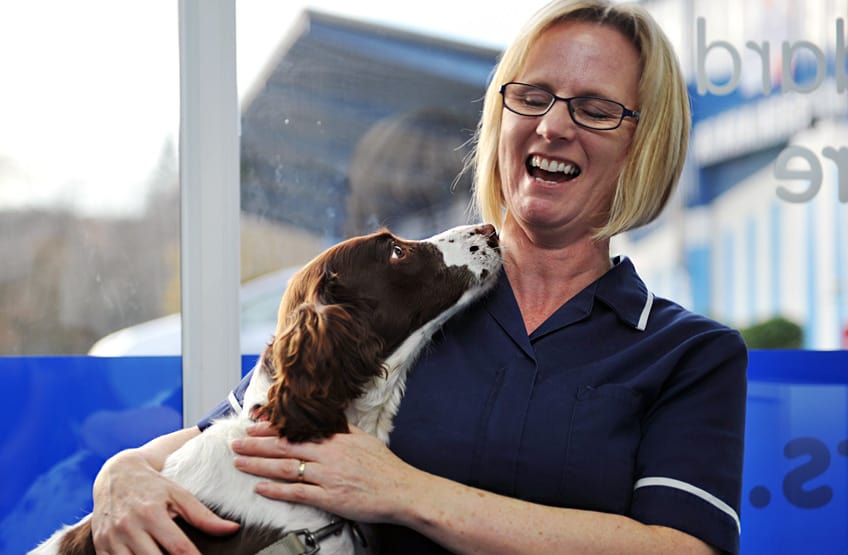Always follow the instructions given by your Veterinary Surgeon, and be sure to administer the full amount of medication over the number of days as instructed.
Below we have a guide to giving your dog medications, whether it is tablets, capsules, pills or liquid and syrups: Please ensure that you thoroughly read and understand the administration instructions on the label prior to giving to your pet - if you are at all unsure, contact your vet BEFORE giving the medication.
How To Administer Tablets & Capsules
- Place the pill between your thumb and index finger. With your other hand, use your thumb and index finger to firmly grasp your dog's upper jaw.
- As you open your dog's mouth, gently fold the upper lip over the teeth. This will reduce the chance of being bitten.
- Rotate your wrist to tilt your dog's head upwards. Use you middle finger to slowly open their lower jaw.
- Keep your middle finger over your dog's small incisor teeth, and deposit the pill as far back on the tongue as possible. Immediately close your dog's mouth. Then, keeping your hand over their mouth, put their head down to facilitate swallowing.
- To further encourage swallowing, stroke your dog's throat or blow on their nose.
How To Administer Liquids & Syrups
Before you begin, read the label to understand the proper dosage required and, if necessary, shake the contents of the bottle. Then fill a syringe or a dropper with the medication.
- Grasp your dog's muzzle with one hand while holding the syringe or dropper with your other hand.
- Gently squirt the medication into the pouch between your dog's teeth and cheek.
- Hold your dog's jaw closed and tilt the head back slightly. Stroke their throat or blow on their nose to encourage swallowing.
- If your dog gags or coughs up the medication, lower their head and calm them down.
Helpful Hints
- Always read the label instructions carefully
- Ask your Veterinary Surgeon if the medication can be given with food, or if it needs to be administered on an empty stomach
- If it can be given with food, some dogs will eat food that the medication has been hidden in
- Ask a friend or family member for help administering if necessary
- Medicate your dog on a table, or a non-slip surface
- When administering medication, stay calm - your dog will be able to sense if you're nervous, which will make it more difficult to apply the treatment
- After medicating, praise your dog, and give them a treat
Remember to praise and treat your dog after successfully administering any medication. If they learn to associate medication with treats, the process may be much easier next time!



Our Services